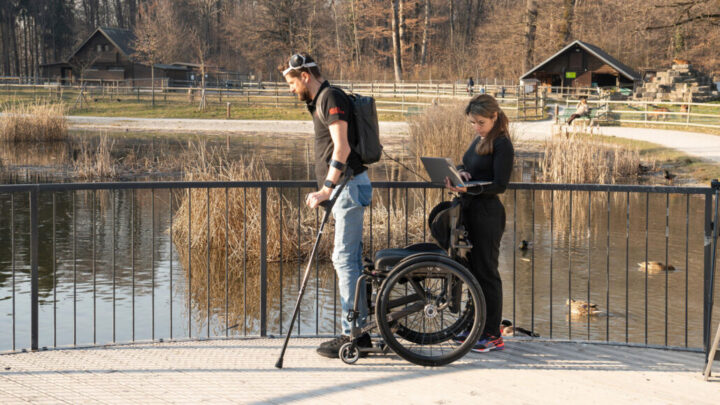Photo Credit: GILLES WEBER/CHUV
Electronic brain chip implants have helped a paralysed man to walk again simply by thinking about it.
The achievement, led by Swiss researchers, was published in Nature, a science journal, on Wednesday.
According to the report, communication between the brain and spinal cord was restored with a “digital bridge” that enabled an individual with chronic tetraplegia — a paralysis caused by an injury of the cervical spinal cord — to stand and walk naturally.
Paralysis occurs when communication between the brain and the region of the spinal cord that produces walking is disrupted by a spinal cord injury.
Advertisement
Scientists said they were able to develop an algorithm which translates the appropriate signals from the brain into instructions to move leg and foot muscles via a second implant inserted around the participant’s spinal cord — which was then intricately attached to the nerve endings related to walking.
“This brain–spine interface (BSI) consists of fully implanted recording and stimulation systems that establish a direct link between cortical signals and the analogue modulation of epidural electrical stimulation targeting the spinal cord regions involved in the production of walking. A highly reliable BSI is calibrated within a few minutes,” the report reads.
“Under general anaesthesia, a bicoronal incision of the scalp was performed to enable two circular-shaped craniotomies over the planned locations of the left and right hemispheres, using a tailor-made circular trephine that matched the diameter of the implants. We then replaced the bone flaps with the two implantable recording devices, before closing the scalp.”
Advertisement
The procedure was carried out in 2021 on a 38-year-old male who had sustained a spinal cord injury during a biking accident 10 years earlier.
According to the report, the success has remained stable over one year, including during independent use at home.
“The participant reports that the BSI enables natural control over the movements of his legs to stand, walk, climb stairs and even traverse complex terrains. Moreover, neurorehabilitation supported by the BSI improved neurological recovery,” the report reads.
“The participant regained the ability to walk with crutches overground even when the BSI was switched off.”
Advertisement
Grégoire Courtine of the École Polytechnique Fédérale in Lausanne (EPFL), who led the project, described the participant’s current mobility as slow but smooth.
“Seeing him walk so naturally is so moving,” he said. “It is a paradigm shift in what was available before.”
Courtine said the aim was to commercialise the technology so it can be used in people’s day-to-day lives.
He added that if the participant received the implant 10 years after his accident, “imagine when we apply our brain-spine interface a few weeks after the injury. The potential for recovery is tremendous”.
Advertisement
Advertisement
Advertisement
Add a comment






